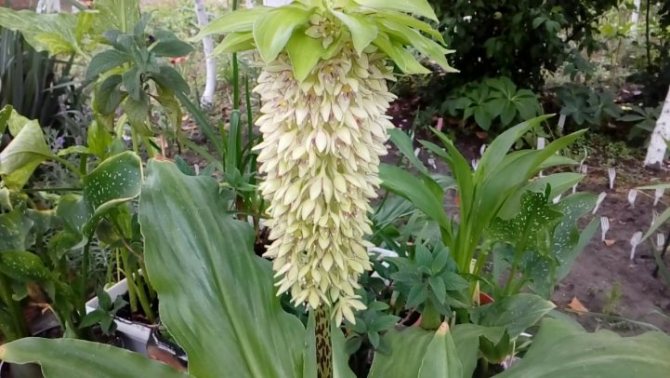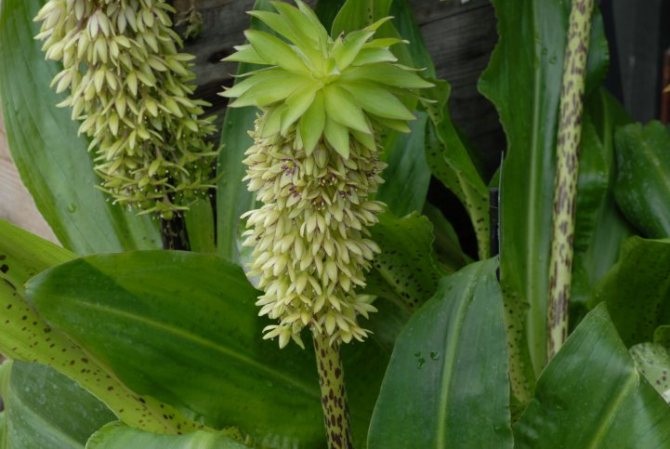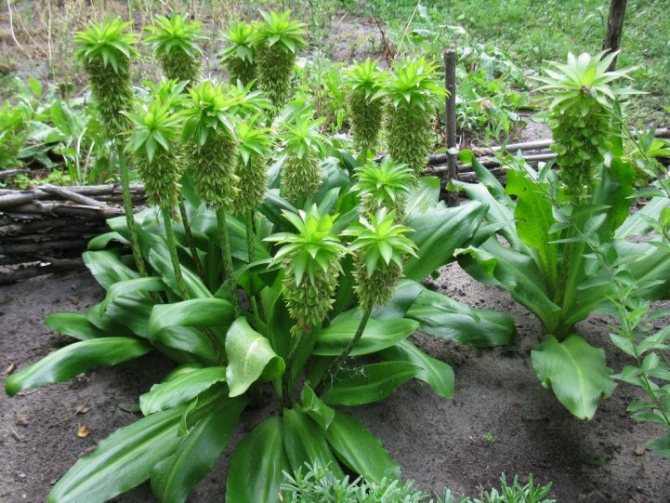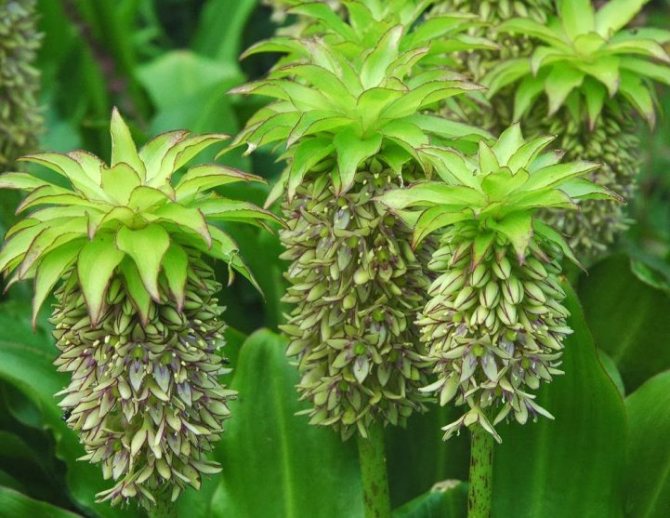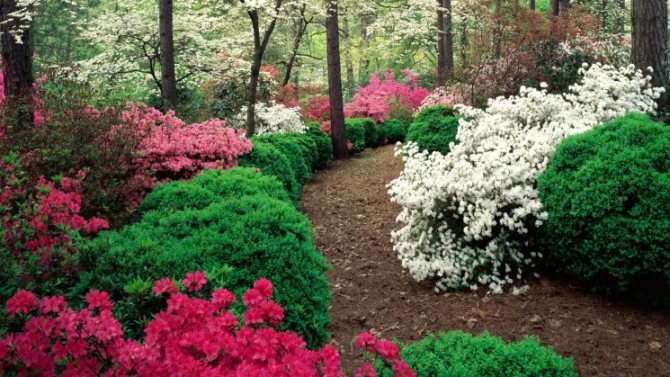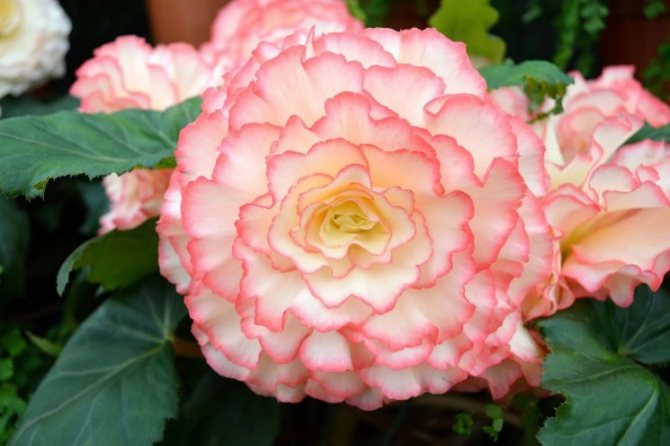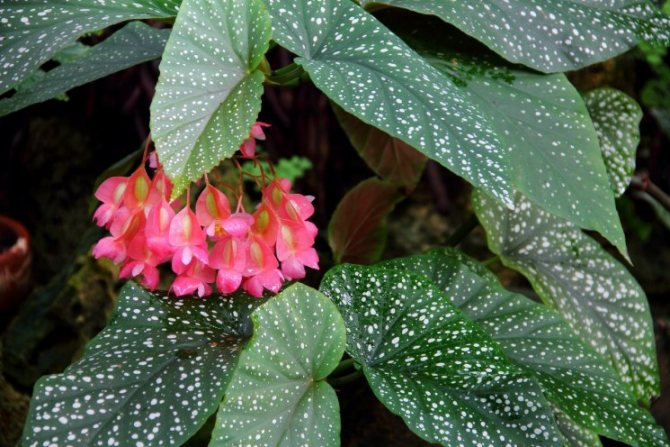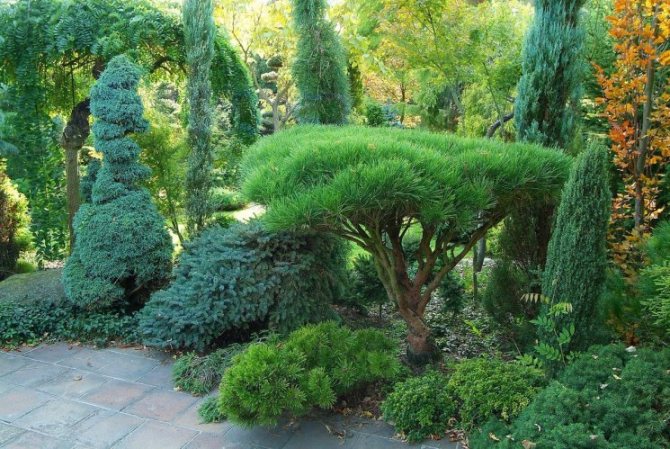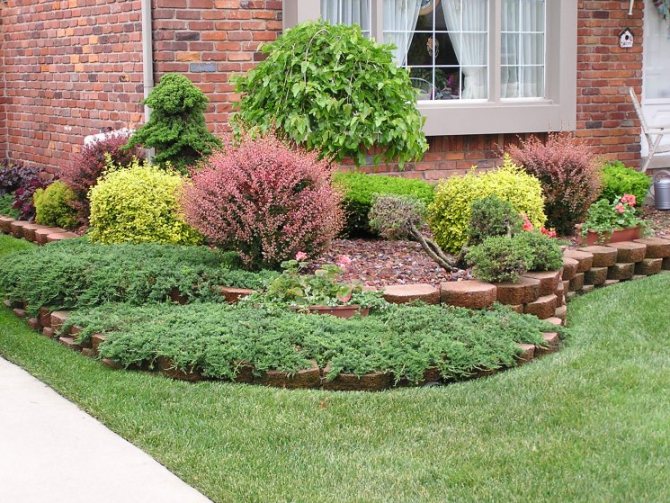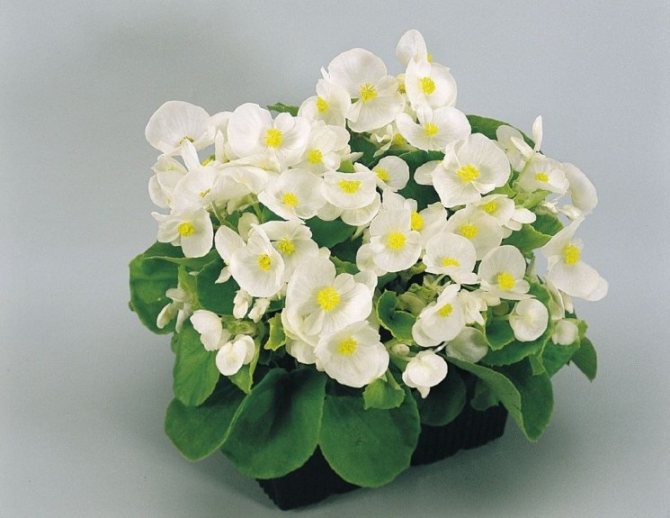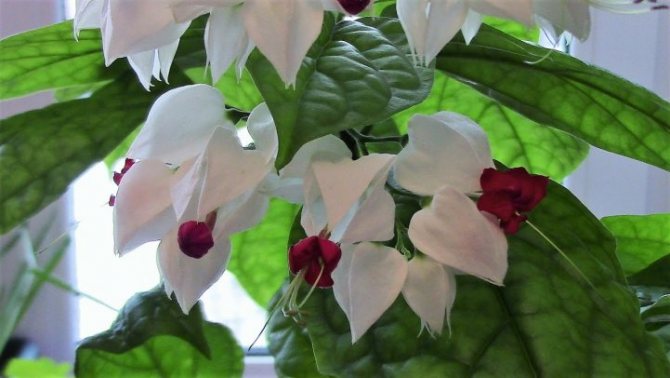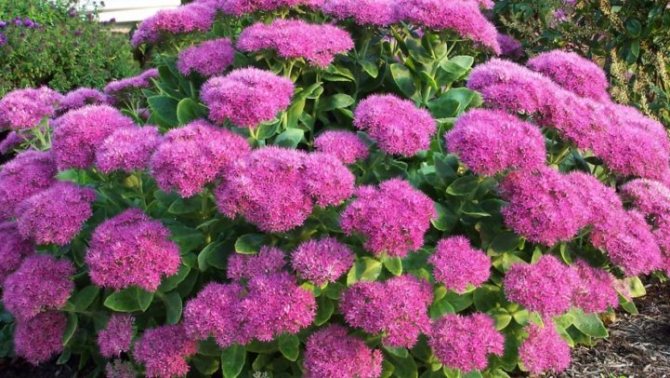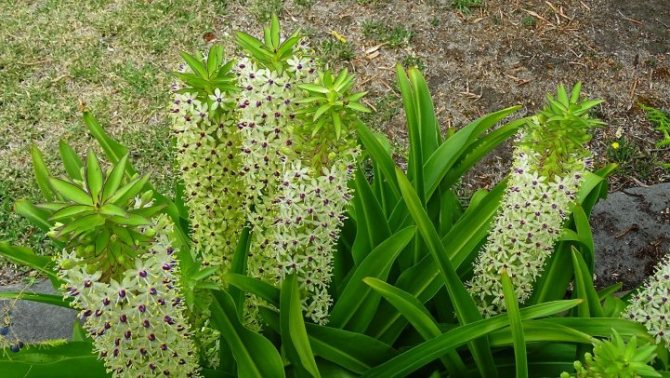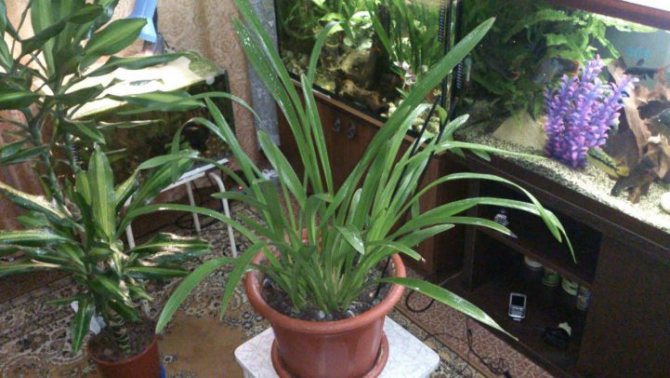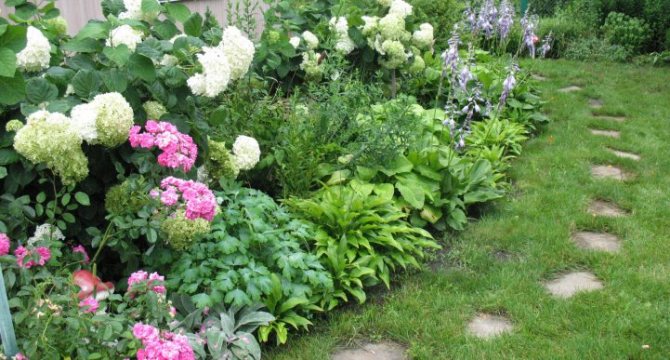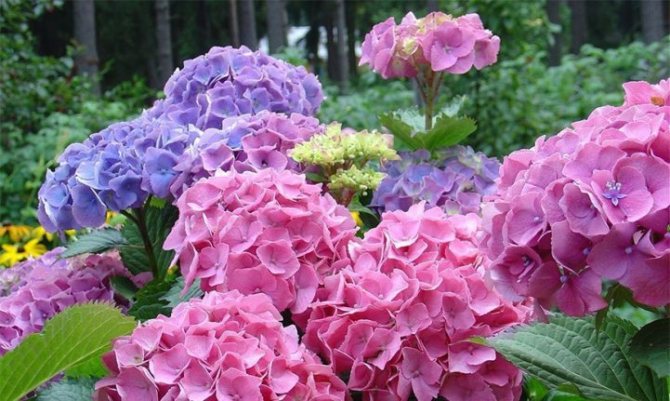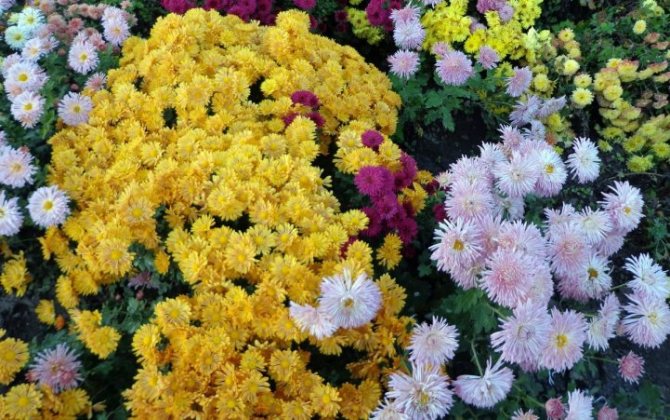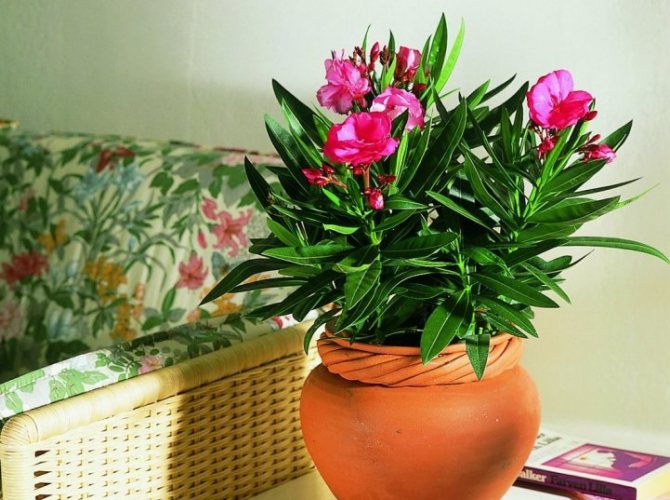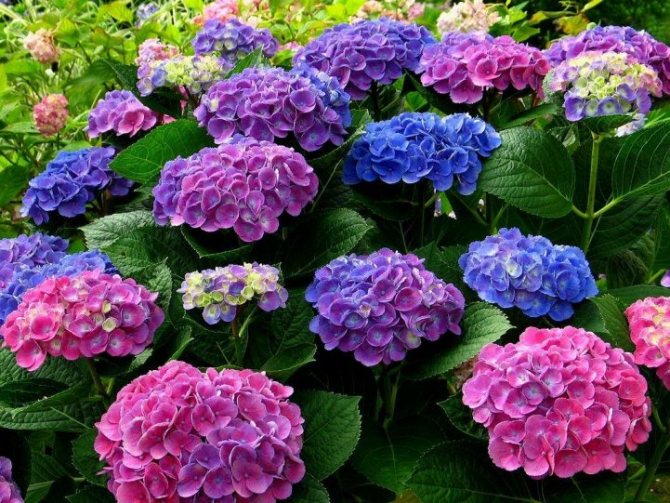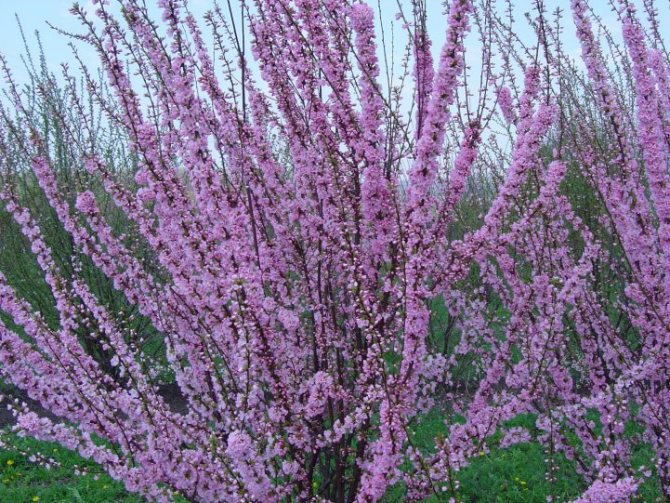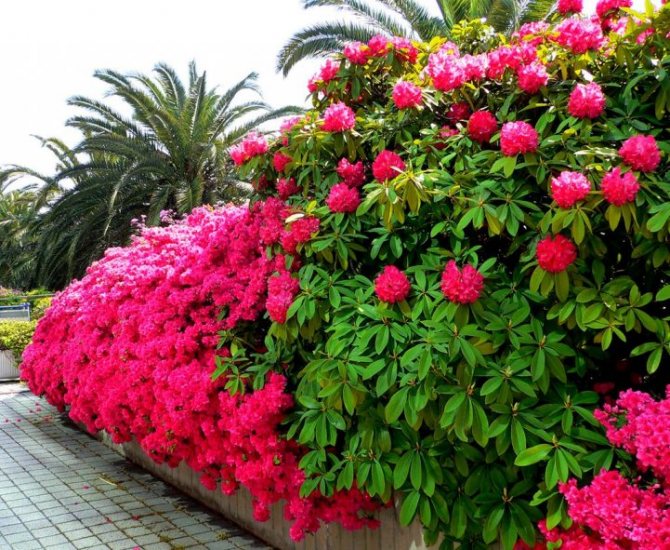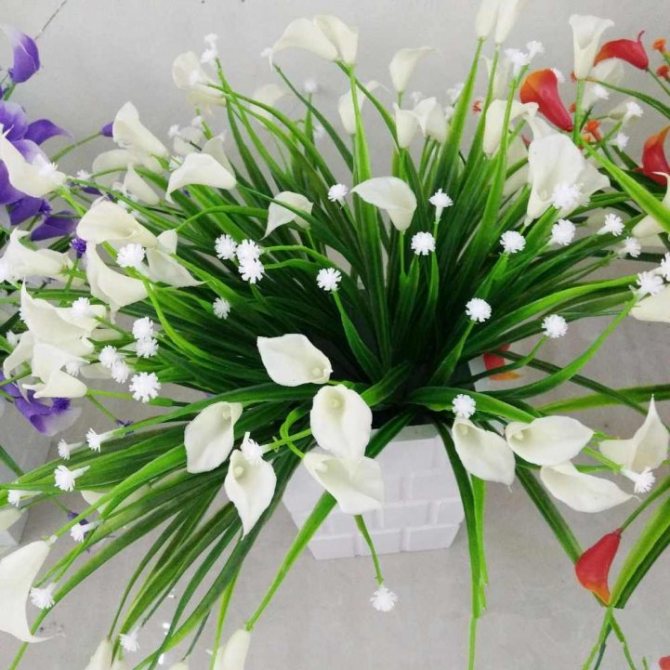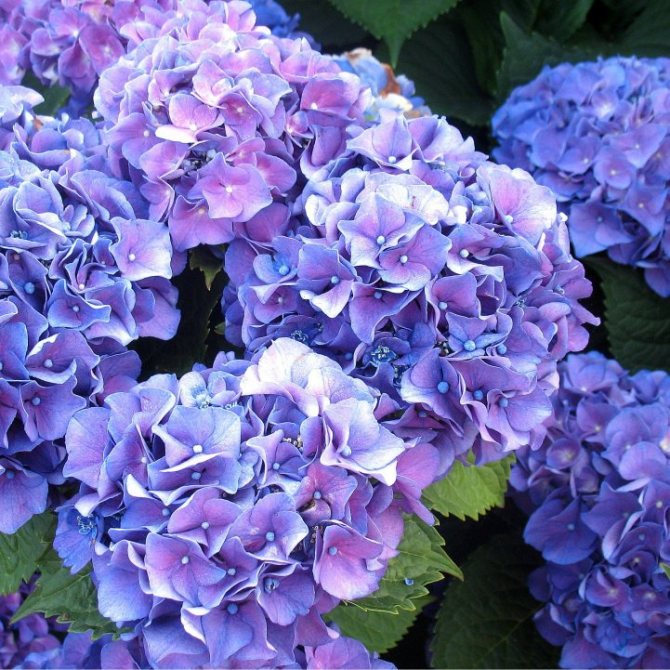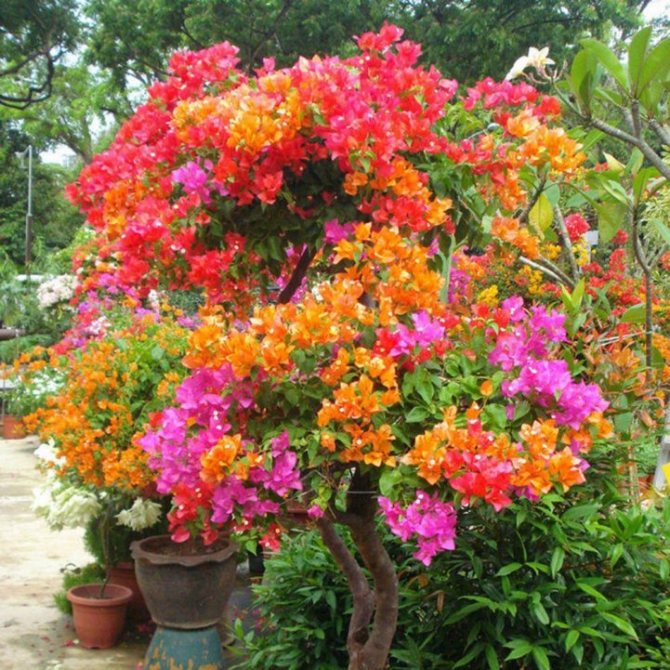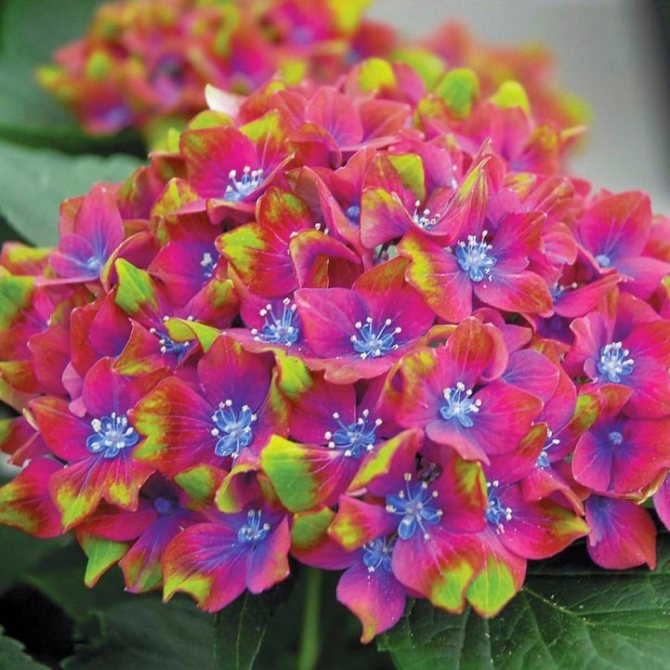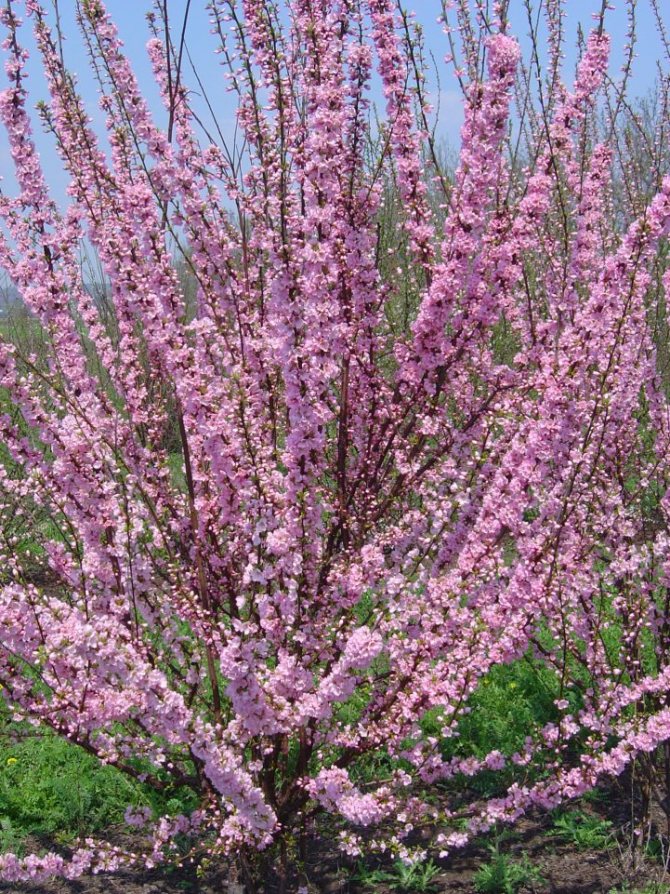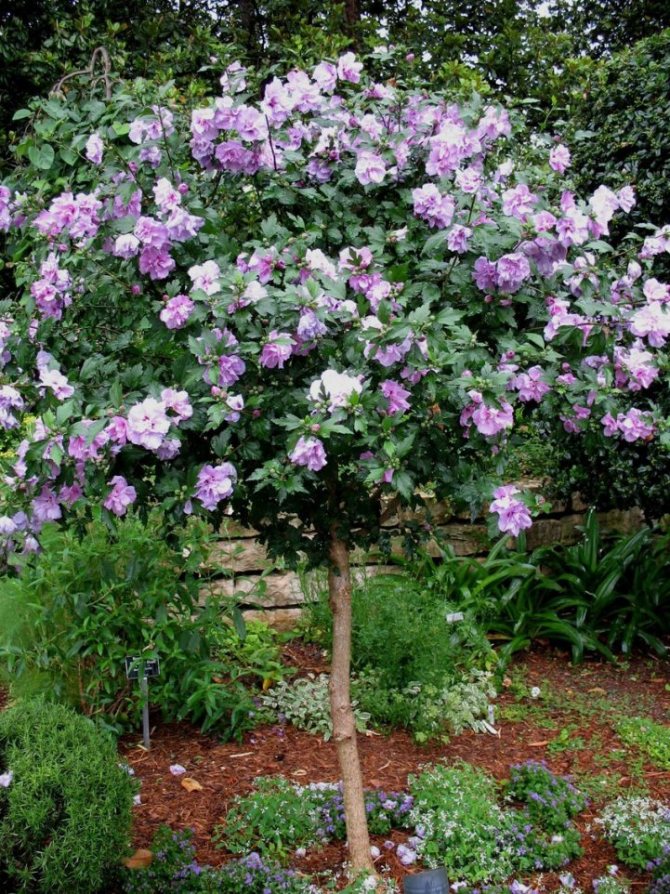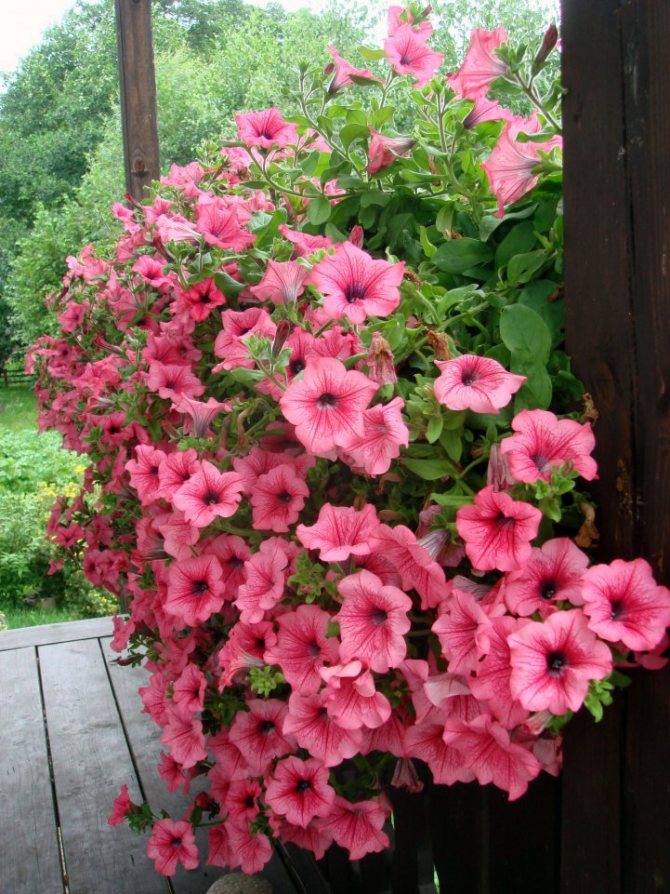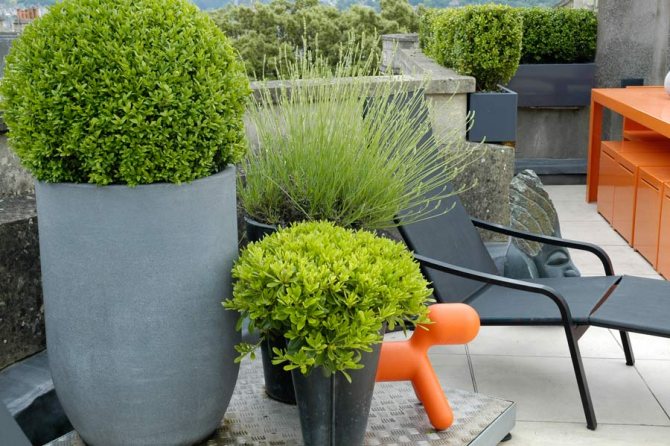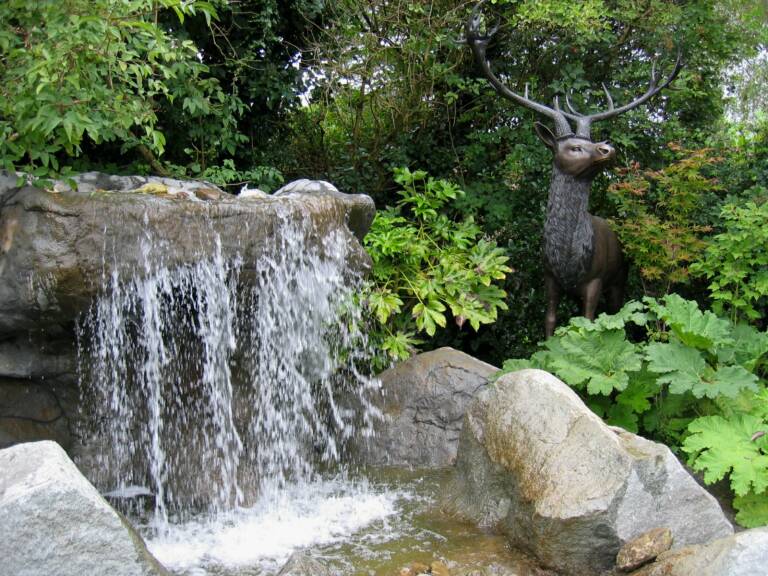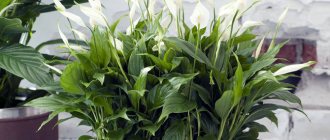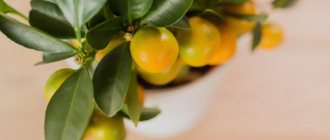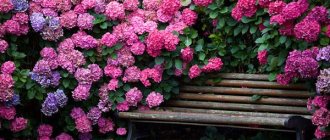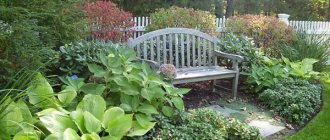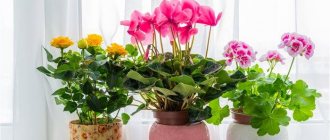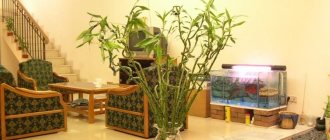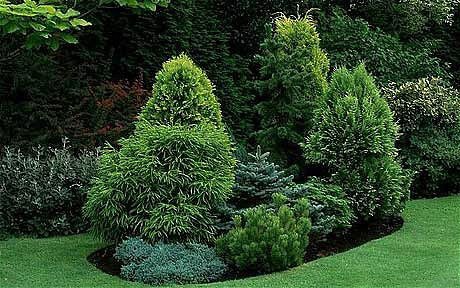
Decorative groups
Ornamental groups of trees and shrubs are an integral part of garden landscaping. Plants diverse in appearance, shape and color, collected in a separate landscape composition, make up a single harmonious whole in the group and look different, but equally beautiful from different parts of the garden plot, as well as at different times of the year. What knowledge does a designer need when designing and drawing up a decorative group of plants?
The main criterion
Sometimes the rhythm of life leaves little time for hobbies and even simple household chores. What to do when the soul wants so much to surround itself with living plants, but caring for them can become a problem?
There is an exit. There is a so-called unpretentious group of decorative flowering potted plants. They easily adapt to the conditions offered by this or that apartment, and do not need complex and constant care.
Due to the variety of species, it is possible to choose a plant with an interesting flower shape and color. Some of them are able to delight with their beauty all year round, which means that even in winter the room will have its own piece of summer.
Evergreens with beautiful flowers
A wide variety of evergreen garden flowers can be found in our green spaces and parks. Rhododendrons, periwinkle, butterbur, hellebore, these beautiful plants are easy to grow, caring for them is simple, and the beauty of the flowers and the brightness of the foliage will make the garden a paradise for relaxation.
Periwinkle
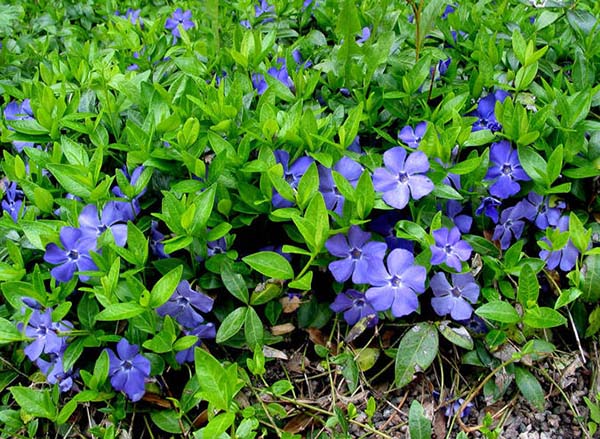

A perennial plant climbing on the ground, liana. Flowering begins in spring, blooms with medium-sized blue flowers. The advantage of this plant is that it is not demanding on sunlight, it can grow in the shade, under trees, in humid places. The greens look especially bright in the snow.
Placing evergreen flowers for the garden, periwinkle should highlight the most shaded and mysterious corners of the garden, under trees, near grottoes, fences and gazebos. Care consists in the initial weeding, immediately after planting, in the future, this plant displaces all weeds, covering the soil with a carpet of its greenery.
Rhododendron
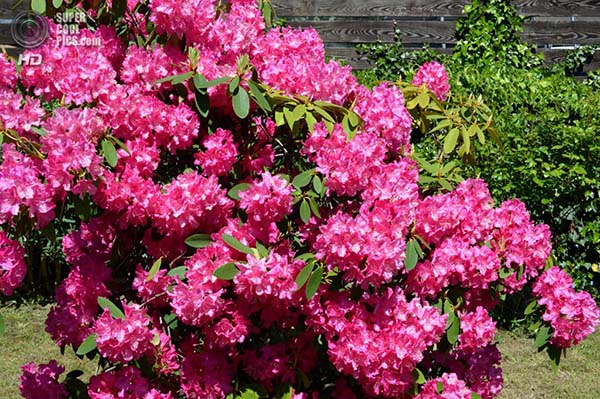

The plant resembles wild rosemary in appearance, but without a pungent odor. It grows as a short shrub, or as a tall tree-like plant. Rhododendron flowers are very beautiful, pink or lilac, form a continuous carpet of inflorescences. Flowering begins in spring, in May.
You need to plant rhododendron in acidic, peat-fed soil. For the winter, the plant is not covered, it tolerates frost well, but poorly bright sunlight, so it is planted in the shade or partial shade. Rhododendron grows well under trees, especially under conifers.
Hellebore
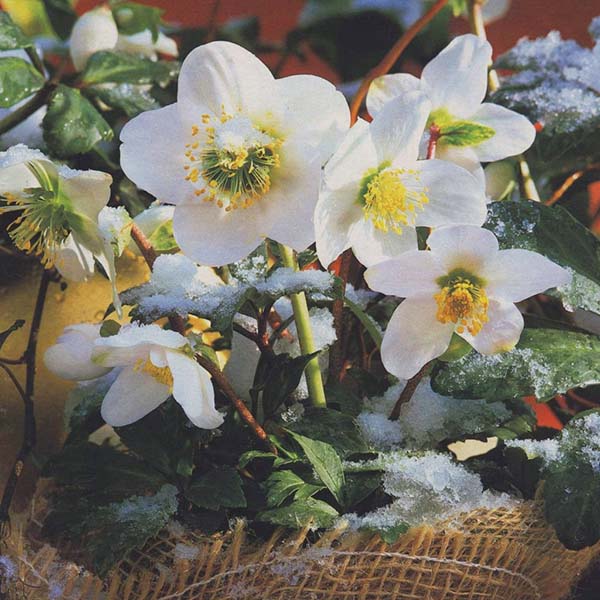

An amazingly beautiful plant, the flowering of which begins in early spring, when the snow has not melted yet. The hellebore is one of the most decorative primroses. If you choose evergreen flowers for the garden, then this particular plant can become its main decoration.
The hellebore is not planted in sunny places, it cannot stand the bright sun. The soil must be well drained so that there is no stagnation of moisture. Slightly acidic soils are good for this plant; hellebore grows poorly on acidic soils.
Butterbur
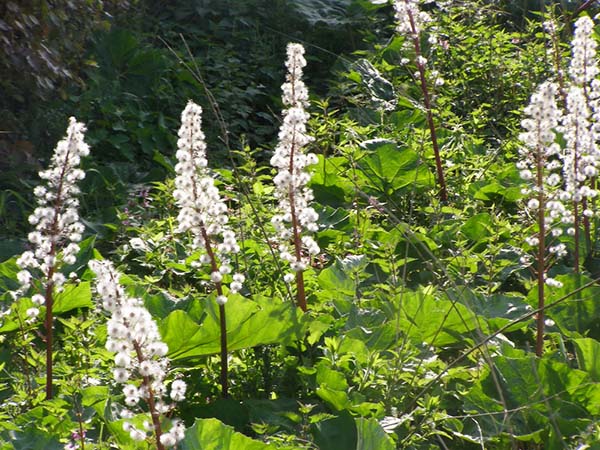

A tall evergreen perennial whose nectar bees love. It begins to bloom in early spring. Not only flowers are decorative in butterbur, but also leaves, so large that even a child can hide under them. When planting butterbur, do not forget that this plant grows strongly, capturing large areas, therefore, to stop the formation of new clumps, it is recommended to enclose the planting site with borders. Evergreen flowers for a garden are plants, without which the green zone loses most of its attractiveness, therefore, when planning a garden, it is imperative to take a place for these decorative and unpretentious flowers, striking in their beauty not only in summer, but also in winter.
Anthurium
A plant with a rather exotic appearance. The people call him male happiness, since it is one of the simplest and most unpretentious flowers to care for. It is not difficult for him to adapt to the climate in the apartment.
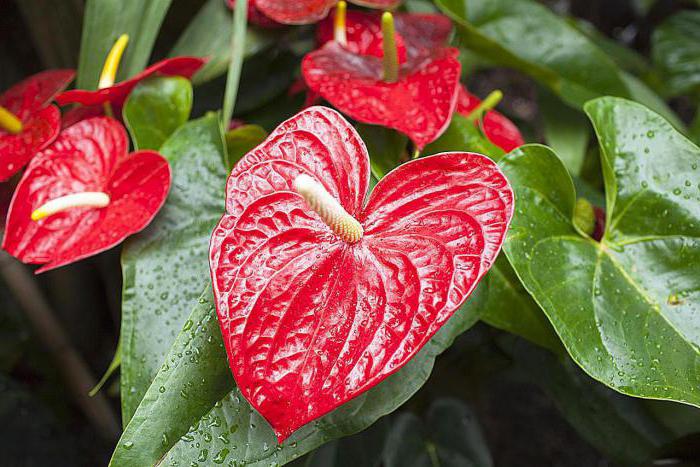

It is very simple to recognize the plant: it has large, wide leaves with a dark green color and an unusual flower. It's all about its shape. At first glance, it seems that it is saturated, red, but in fact it is a leaf. But the flower is a yellow ear that is above it. Such an unusual and bright accent will transform the room. Bright red pillows or curtains are perfect for this.
Ornamental cabbage
One of the brightest representatives of annuals, distinguished by amazing leaves, is the mesmerizing openwork ornamental cabbage (Brassica oleoraceae var. Acephala f. Crispa), which is sometimes called "curly vegetable". She comes from the Mediterranean.
This is a real cabbage, it can even be used in salads or to decorate dishes. But the gray-green, white, cream, muted lilac and bluish shades combined in the color of the openwork leaves make it an incredibly bizarre plant.
Its luxurious rosettes at the beginning of the growing season are not at all remarkable, and in the fall, as if by a wave of a magic wand, they are transformed into an amazing “flower”.
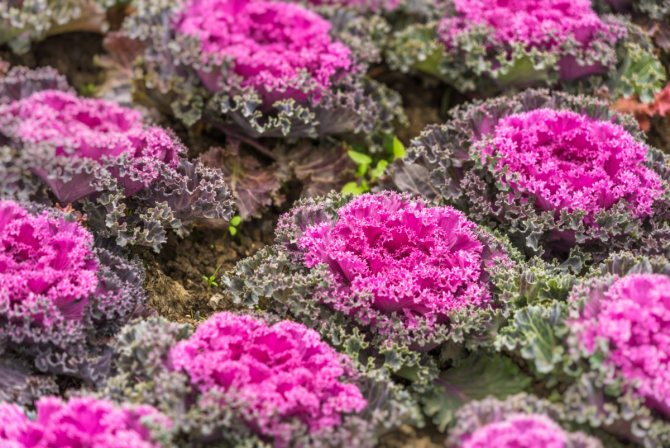

It “blooms”, fully revealing its decorative potential, only by October. Fearing neither late frosts nor cold winds, kale adorns the garden until winter.
She is good both as a bright soloist (in single plantings and in groups) in small flower beds or beds, and as a tub plant.
Low-growing varieties can be used to create curbs. It is a foreground plant, the main decorative accent. Different varieties of ornamental cabbage go well with each other, but it is better not to mix it with other plants.
Our advice:
It looks more impressive if the rest of the plants are planted at some distance - either border the cabbage group on the sides, or create a background for it.
Ornamental cabbage prefers bright sun, open areas with nutritious, fertile soil.
Caring for her is simple: all this amazing plant will need is moderate but regular watering.
Spathiphyllum
If you want to decorate the room with a more delicate and classic flower, then the choice of spathiphyllum is an excellent solution. Do not be afraid of its complex name: it is easy to care for, and therefore it will be an excellent gift for a young couple or anyone who had no previous experience in growing flowers.
The excuse "Nothing survives for me!" he is not afraid, because spathiphyllum steadfastly tolerates the lack of watering and a lack of sunlight.


This decorative flowering plant looks very delicate. An interesting contrast of rich dark green stems and leaves is complemented by a snow-white flower, so reminiscent of calla lilies. Its beauty can be observed all year round.
Cineraria sea
(Сinerariа maritima)
A great alternative to classic silver-leafed perennials.It is also called the "seaside" or "ashen". Her leaves are openwork, pinnately dissected, with a silvery down.
In bright light, the plant appears almost white. The leaves are so densely pubescent that the plant seems velvety.
Our advice:
In order for cineraria to remain decorative, it should be planted on a sunny site with enriched soil and watered abundantly.
She is great in borders, bands, mixborders, and also as a companion of bright colors in street vases and containers. It is an ideal plant for carpet compositions.
Indoor hibiscus
The second name of this decorative flowering plant is the Chinese rose. It has the shape of a tree, so to keep it neat, it is shaped from time to time by removing unnecessarily long shoots.


The rose blooms almost all year round, but in a very unusual way. The bud appears first. Then a bright flower blooms, but it lives only a day. The next day, it disappears on its own, and new buds appear to replace it.
Hibiscus comes in a wide variety of colors, so several pots can be placed on one windowsill at once.
Irezine
Once popular, but now undeservedly forgotten by Ukrainian gardeners, a plant with bright reverse-heart-shaped leaves.
In European countries, it is actively used for landscaping gardens and parks, mainly for compositions in red tones. In our country, it is just beginning to come back into fashion.
Depending on the variety, this plant can be either erect or creeping or prostrate.
Light-loving irezine is undemanding to care for. For normal development, abundant watering and feeding is enough for her. To make the plant more branched and dense, the tops of the shoots should be pinched regularly.
In culture, two types of irezine are grown - Linden (Iresine lindenii) and Herbst (Iresine herbstii).
The colorful Linden irezine has beautiful stems and impressive bright crimson large leaves, while Herbst irezine has unusual purple-beetroot leaves.


The latter species is aureoreticulata with wine-red stems and green-yellow veins on the leaves.
Phalaenopsis orchid
This type of decorative flowering indoor plant is loved by many representatives of the fair sex. The orchid is very often chosen as a gift because it combines the charm of a flower with longevity.
The plant is unpretentious in care, loves slightly shaded places. The eastern part of the house or apartment is perfect.
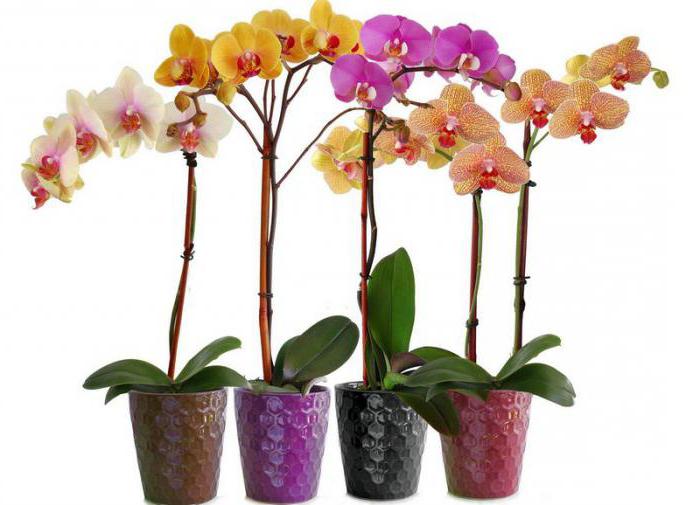

An unusual detail of orchids is their aerial roots, which are located not only in the pot, but also on top of it. The color of the flowers can be different.
Development of the project of the decorative group
Landscape design studio "Apple Garden" offers services for design of decorative groups using trees, shrubs and large herbaceous perennials. An order for the design of decorative groups can be made both as part of a comprehensive project documentation, or separately, which is provided for by the sheet-by-sheet payment system we offer. The cost of the project of a decorative group is determined by its area.
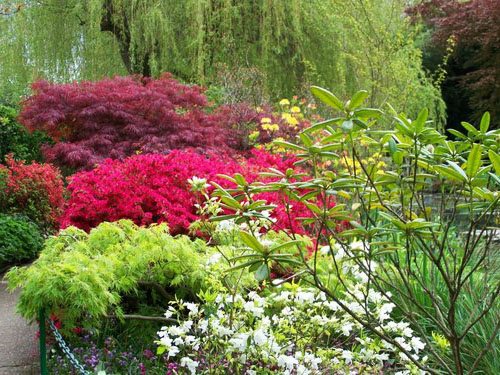

Decorative group of plants
Today, a huge number of little-known ornamental plants have appeared on the Russian horticultural market. There are many gardeners among those who have not purchased any unusual tree or shrub at least once. But more often we can come across the concept of "collection excitement", when people buy up almost every new product. Here you need to understand two things: what we know about those plants that we buy, and whether we realize that the abundance of various plants not only does not help, but also interferes with the achievement of harmony in our garden.
In fact, a garden can be made beautiful using a minimal set of well-known plants. The main thing is the correct creation of the composition and a sense of proportion.
Saintpaulia (uzambara violet)
They call it just a violet, and you can find such a flower in almost any home. Such popularity is due to the simple rules of care and the compact size of the plant, which allows you to place the pot even on a tiny windowsill.
Violet flowers are unusual. The very traditional shape is complemented by an interesting surface of a large number of villi, due to which it literally becomes fluffy. The color of the flower depends on the variety, but it is always deep and rich.
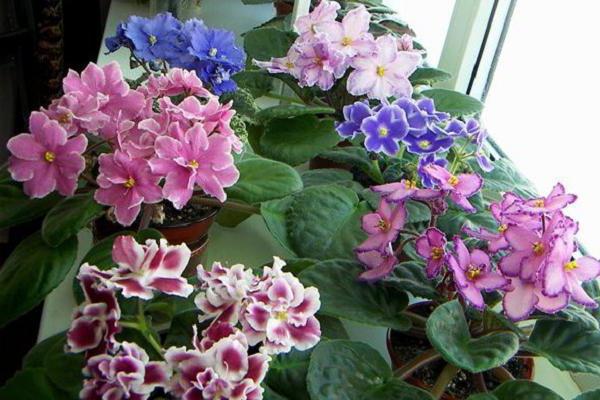

Do not water the plant directly at the root. Its leaves are prone to the formation of harmful mold, so water is added to the pan where the pot stands, and the saintpaulia itself absorbs moisture.
When the violet is actively blooming, it is watered only twice a month, and the soil in the pot is covered with moss. It turns out something like a fabulous mini-lawn.
Perilla shrub
(Perilla frutescens)
An annual East Asian representative of the Labiate family (Yasnotkovy), growing up to half a meter. In young plants, the leaves are similar to basil, but with age they become pointed, serrated-corrugated, large, with prominent veins.
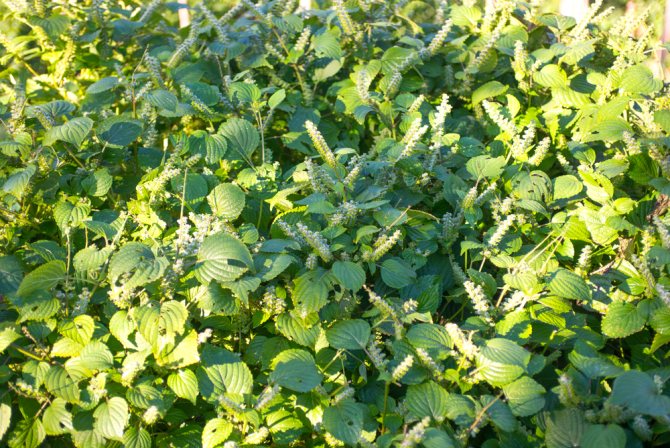

At first, they are muted green, and then gradually acquire an unusual ink color. Wide, oval, pointed leaves are sometimes split, and in some varieties they are decorated with a beautiful fringe along the edge.
Perilla, like all annuals, adores the bright sun, but for successful growth she also needs light fertile soil. She looks great on bed and flower beds.
Clivia
A very interesting decorative flowering plant, native to South Africa. The high humidity of this area allows clivia to grow here as well. You can place the pot in any convenient corner of the house.
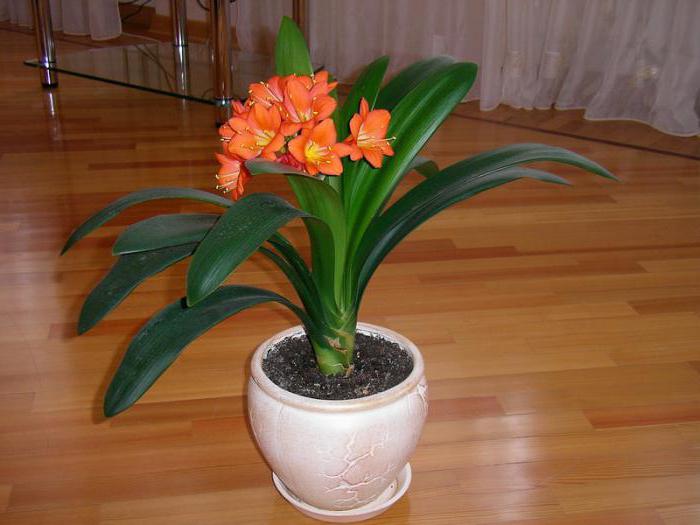

You can water your plants in different ways, just by checking the soil moisture. The main thing is not to create excess moisture. Clivia feels completely comfortable even in a small hallway, where only artificial lighting is present. It blooms since February. This is a real holiday! Many bright orange little flowers come together to create a colorful hat.
If your crazy work schedule doesn't allow you to devote a lot of time to flowers, then clivia is great.
Castor oil plant
(Ricinus communis)
An annual plant from the euphorbia family. It looks very exotic. And even then to say, this annual grows up to 3 m in a rather mild time!
The birthplace of castor bean is Central Africa. Its huge reddish brown or classic green leaves are very beautiful. Multi-lobed, on a long petiole, shaped like the leaves of a fan palm.
Castor oil plant grows only in light areas in constantly moist and very fertile soil. This is a bright soloist who will help you quickly disguise the unsightly corners of the garden.
Primrose
Another unusual name for a decorative flowering indoor plant. Great for small windowsills or shelves. The primrose will certainly decorate the room. The plant has rich, dark green stems and leaves, and the flowers are bright lemon-colored with an orange core. Although recently the palette has become very rich.
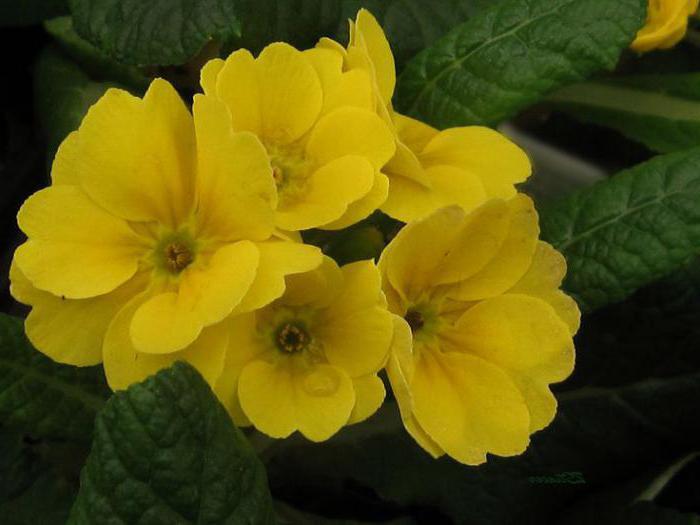

It is better to place the pot in the southern part of the apartment, but protect it from direct sunlight. Excessively dry indoor air will not harm the flower, so you do not need to spray it.
When watering, do not follow the rule "the more the better." If there is too much moisture, the plant will soon die. In winter, watering is completely reduced to a minimum. Primrose can bloom all year round and delight with bright colors even on gray days.
Euphorbia fringed
(Euphorbia marginata)
Came to us from North America. Its beauty is not in small white flowers, but in foliage. The edges of medium-sized green leaves are snow-white, and the leaves themselves resemble a flower.
The plant is very fond of warmth and light, is relatively drought-resistant, grows better on nutritious loose soils and in places protected from cold winds.
Looks spectacular in mixborders and groups. It is also a great material for arranging.
Calla Ethiopian
Another representative of the unpretentious group of plants. Like spathiphyllum, it is suitable for lovers of classics and tenderness. A change in temperature, for example, before the onset of the heating season, will not affect the condition of the flower.
The plant will be able to show all its beauty in November and will delight the eyes until May. Calla lilies spend most of the summer resting. During this period, it is necessary to water it less and not to change the location of the pot, not to disturb it.
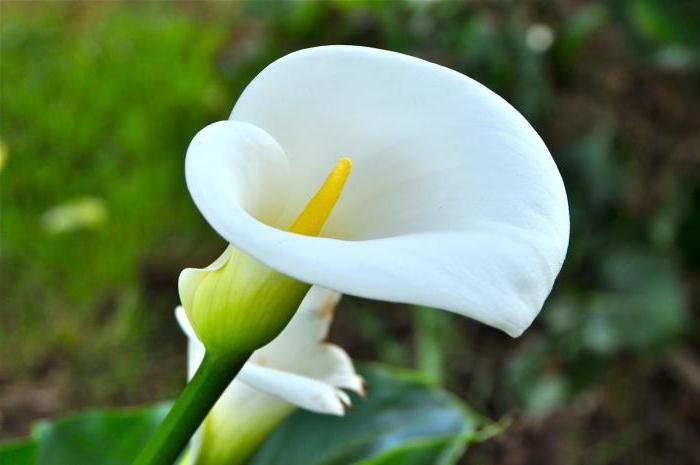

From time to time, dead leaves are removed from the flower, in place of which new ones appear.
Decorative flowering plants are salvation from melancholy and blues at any time of the year. Rooms need such a lively and vibrant interior element. Simple care will not burden the owner, and beautiful flowers will cheer you up!
Types of planting trees and shrubs
Alley
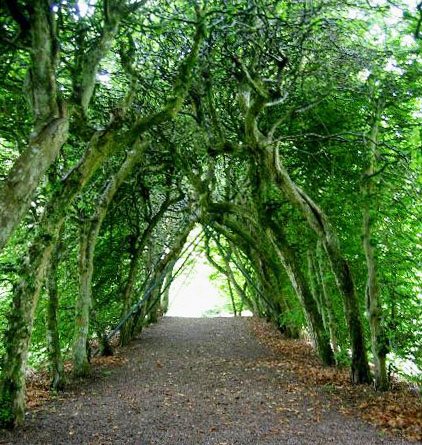

Green alley
As a rule, avenue planting of plants is used along the garden path. This technique of landscape architecture is an element of the regularity of the landscape style. At the end of the alley, they usually place some bright element in the form of a small architectural form, for example, a sculpture, a bench, a flower garden, etc. This technique of landscape architecture involves planting plants of the same age and height. Fruit trees or shrubs look very impressive in an alley planting, especially at the time of spring flowering. In addition, you need to remember one basic rule: the smaller the garden, the lower the plants should be for this type of planting.
Hedge (green wall)
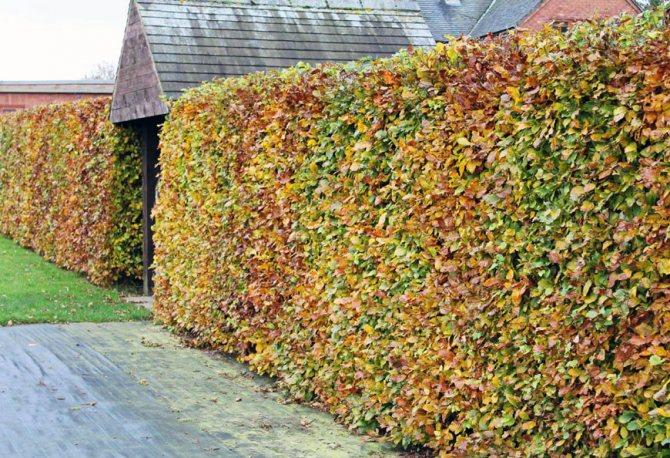

Living wall
Hedges include dense planting. Very strict requirements are imposed on this type of planting - they must have a neat shape and keep it all year round. The most common function of green walls is to separate one area of the garden from another. In addition, this landscape design technique is intended to decorate a distant view of the garden and as a means of protection from wind and noise. Another type of hedge is a garden curb, its height should not exceed 0.5 m.
Accent fit
Accent planting in the garden
Only perceptible decorative plant groupseg with unusual shapes or decorative foliage.
Group landing
One of the techniques of landscape design of the site is the group planting of trees and shrubs. This technique is used to create a background, fill open space, decorate unsightly places in the garden.
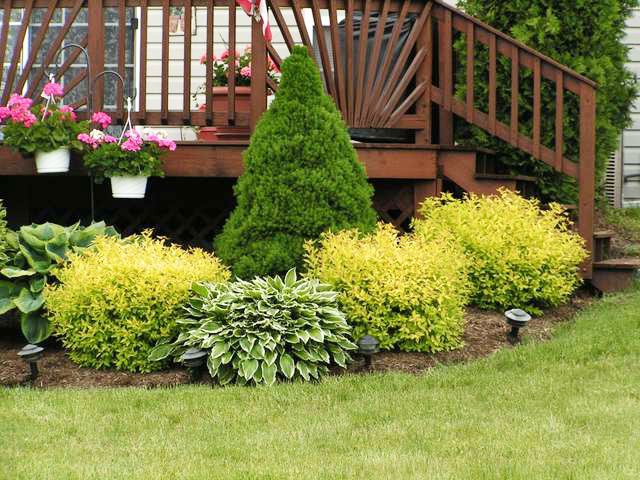

Group of plants
In order for the tree-shrub decorative group to look really decorative, it must have clear outlines; for this, the plants are planted in such a way that their crowns close in adulthood. In order for the group to retain its decorative effect throughout the year, it is necessary to supplement it with coniferous plants and shrubs with an expressive color scheme and a pattern of branches. And to add color to the group, you can add herbaceous perennials, cereals and decorative elements (for example, pergolas, trellises, and others) to the group.
Eucomis
A bright, attractive flower with shiny green leaves.
It seems that the foliage of the eukomis is varnished. It blooms with arrows with many small cream-colored flowers.
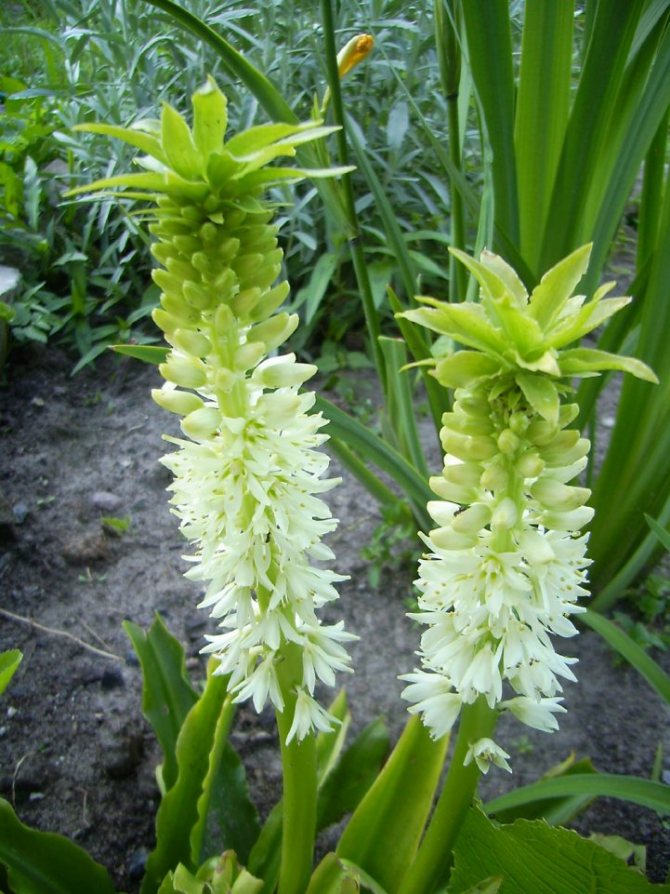

Unpretentious ornamental plants.
Fat woman
Popularly known as the money tree. A find for busy and forgetful people. She will survive irregular watering and lack of feeding. It does not need to be cut or transplanted. Just don't keep the plant in a dark place.


We recommend reading:
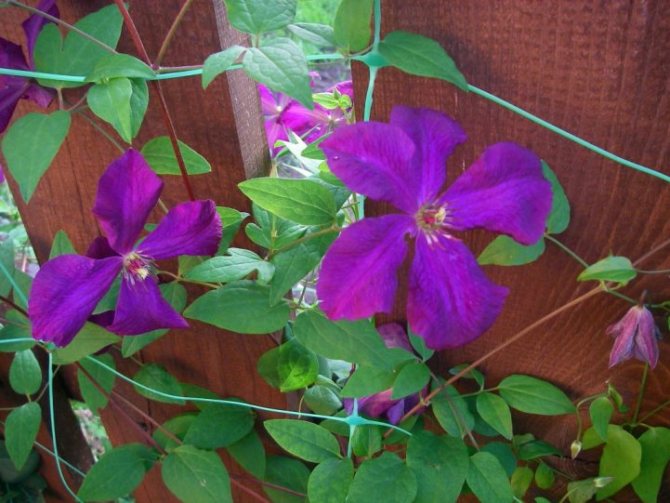

Lianas for the garden - an overview of the best climbing flowers and popular types of plants for garden and landscape design (120 photos)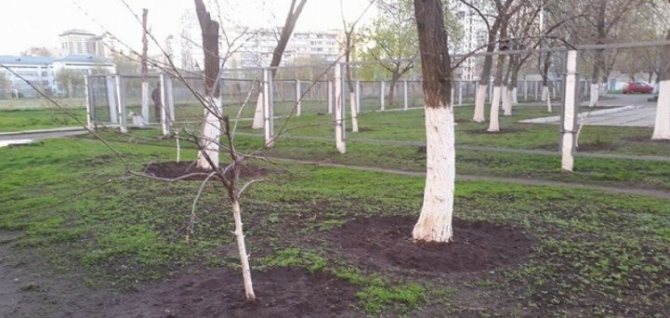

Rules for whitewashing trees - a step-by-step description of whitewashing and methods of quick processing of garden trees (115 photos)
- What are the most unpretentious flowers? Review of the most beautiful and easy-care plants for garden or landscape design (105 photos)
Holly Mezerva
Green shiny leaves with deep red petioles and shiny dark red fruits are typical for different varieties of this shrub.
Holly leaves and fruits are poisonous!
Flowers / fruits
The flowers are white, inconspicuous; red berry-shaped drupes.
Care
Suitable for curly haircuts.
Note:
A plant for a mild climate. In Central Russia, compact varieties can be grown in containers.


Holly Mezerva
Spruce
The most popular and familiar tree comes in three varieties.
European
A giant spruce, which can grow up to 30 meters in height and spread branches no less than 5 m. The first decade after planting grows slowly, then it can add more than half a meter in height in a year. In gardens, its decorative varieties are more often used:
- Akrokona - dark green needles, height only under 3 meters;
- Inversa is an unusual spruce, the branches of which bend to the ground, like a willow;
- Maxveli is a small two-meter spruce with yellowish needles and a round crown;
- Tompa is a one and a half meter small spruce with a light green crown.
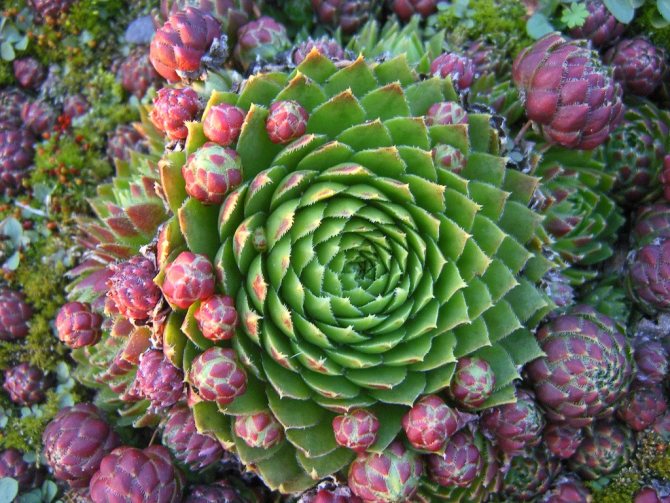

Prickly
It can grow up to 25 meters. The crown is lowered with a bluish tint. The spines are long, sharp. It also has decorative subspecies:
- Fastigiata - narrow crown, noble blue tint;
- Guspi is not just a blue tide, but a bright color, up to 11 meters high;
- Fat Albert - bluish tide, height up to 15 meters.
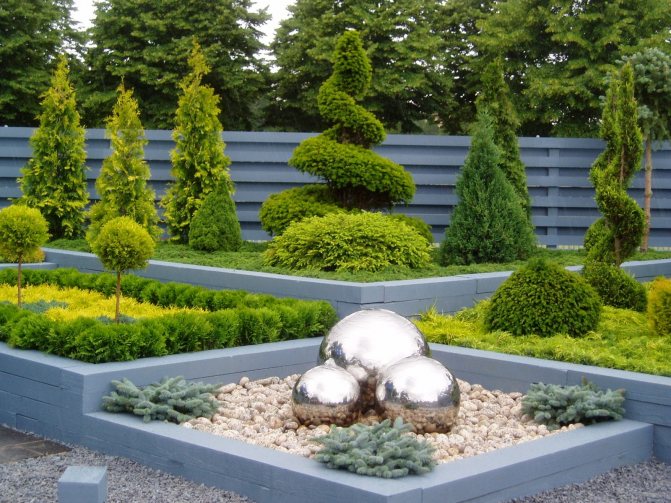

Serbian
The most frost-resistant spruce, which calmly tolerates frosts up to 30 degrees. Easy to care for, wind-resistant. Has decorative varieties:
- Alexandra - dense, rounded crown, fast-growing;
- Freya - spread out rigid crown of irregular shape, height up to 3 meters;
- Gnome - sprawling rounded crown, bluish tide, about half a meter high;
- Karel is the smallest spruce that barely grows to a meter.
Spruce does not tolerate close proximity to other trees - its roots grow over a large area close to the surface and it makes no sense to plant any other plant closer than at a distance of 3 meters. He also does not like abundant watering, like many other coniferous woody plants. The ideal watering scheme is once every 10 days, little by little.
Loves light and grows well in the sun. It is better to plant seedlings in summer, in dry loosened soil.
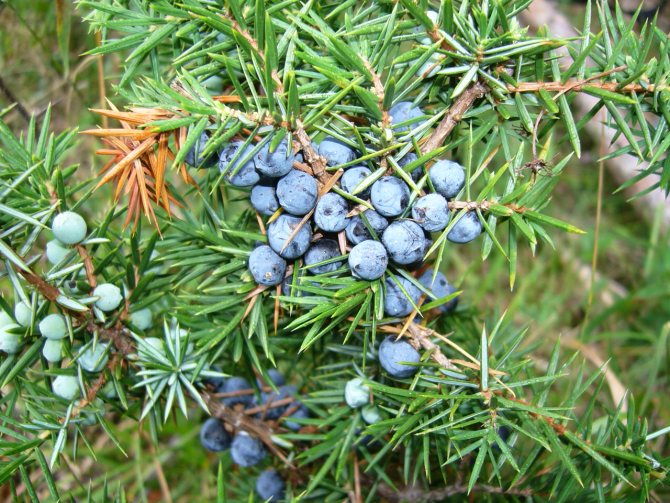

Tamarisk
Another adorable ornamental plant shown in the photo is beautifully called Bead or God's tree. Tamarisk took its scientific name from the Tama-Riz River, which flows in the Pyrenees Mountains.


Beadberry mainly grows in deserts and dune sands. It can be found in Africa, Asia and southern Europe.
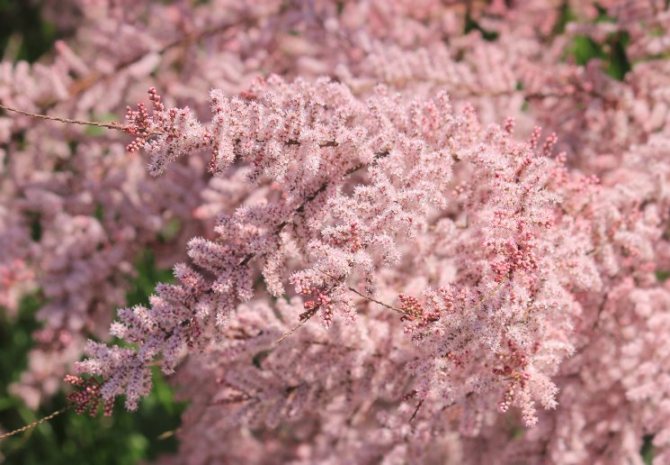

This tree has more than fifteen species, and in the Caucasus it rises to a height of over six hundred meters. Deciduous or evergreen shrubs grow bushy, reaching a height of one and a half to twelve meters. Their trunk, as a rule, is no thicker than half a meter.
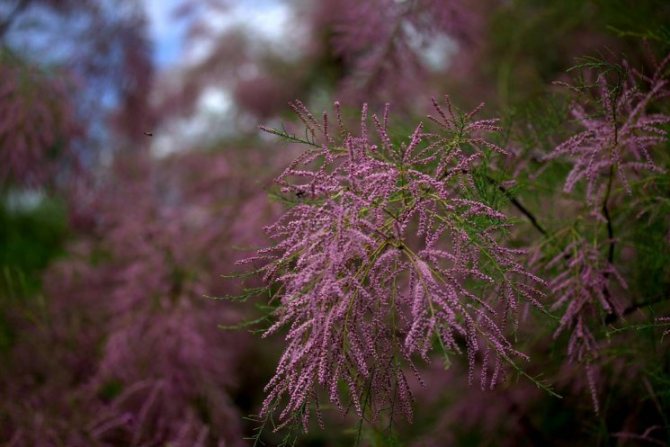

Japanese quince, Chaenomeles
Homeland - China, Japan. Perennial deciduous and spreading shrub of the Rosaceae family, about 3m high at home, about 0.7m in Moscow. The bush branches have spines up to one and a half centimeters long. The leaves are dark green, shiny, oblong-ovate, serrate at the edges, up to 8 cm long.
The flowers are bright orange-red, sometimes white or pink, up to 5 cm in diameter, collected in 2-6 flowers in corymbose inflorescences. There are varieties of Japanese Quince and double flowers. The plant blooms in late April - early May, within a month. Fruits are ovoid-round, yellow-green in color, fragrant, edible. Ripen in September-October. Japanese quince is propagated by seeds, root suckers, green cuttings.
This is a frost-hardy, light-loving, drought-resistant plant, the soil for its cultivation must be fertile, loose, drained, moderately moist. Quince Japanese does not tolerate soil salinity and excess lime in it. As an early flowering spring shrub, Japanese quince is planted in single and group plantings, squares, parks, on the edges. Japanese quince is also known low (Henomeles Maulea - a bush up to 1 m, flowers are orange-red).
Burnet
Distributed in Western Europe, China, Mongolia. Perennial rhizome plant of the Rosaceae family. Stems are thin, long, reaching 1.5 m in height. The leaves are pinnate, the flowers of the Rosaceae family are small, dark red or dark purple in color, collected in oval, spike-shaped inflorescences.
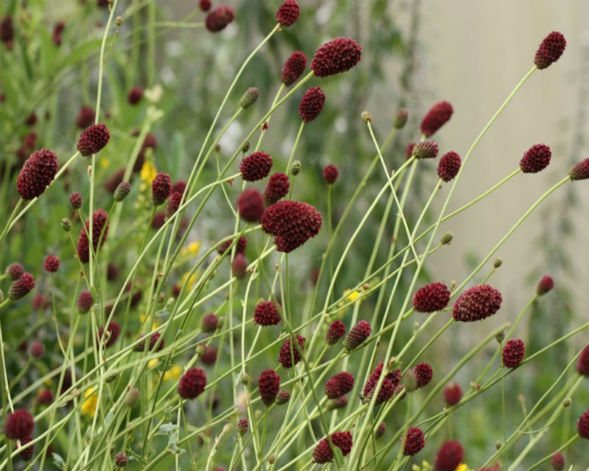

The plant blooms in June-July. Fruit - single-seeded, dry, tetrahedral nuts, ripen in August-September. Seeds are small, brown. Burnet is propagated by dividing the bush, seeds.
The plant is frost-resistant, shade-tolerant, moisture-loving. The soil for cultivation must be fertile and sufficiently moist. Planted in groups in mixborders. It also grows in damp meadows, damp forest edges and clearings. Plants are also used to decorate bouquets.
The following types are known: Medicinal Burnet (roots and rhizomes are used in medicine), White Burnet (white, drooping inflorescences), Alpine Burnet (whitish-green flowers), Canadian Burnet (white flowers), Small-flowered Burnet (pink flowers).
Eucharis or Amazonian lily
A refined plant with a pleasant aroma. In appearance, it somewhat resembles a daffodil. A good solution for interior decoration, because even at rest, the plant impresses with its beauty.
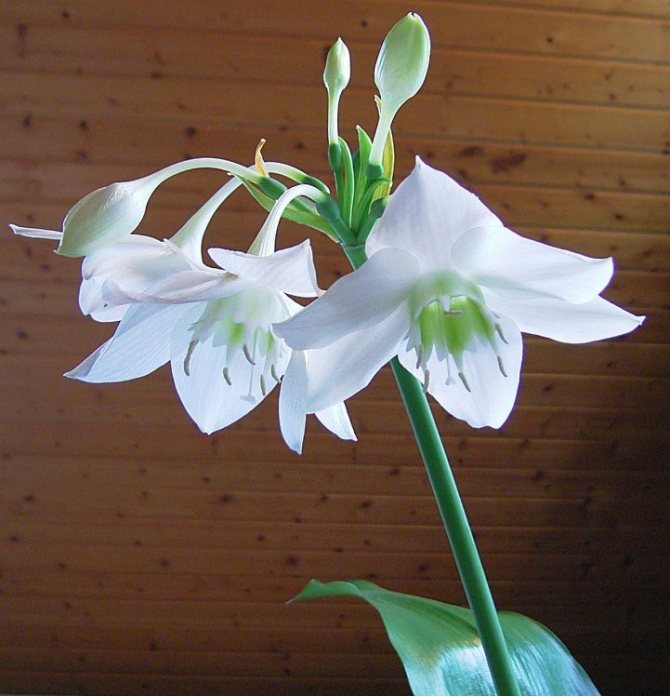

We recommend reading:
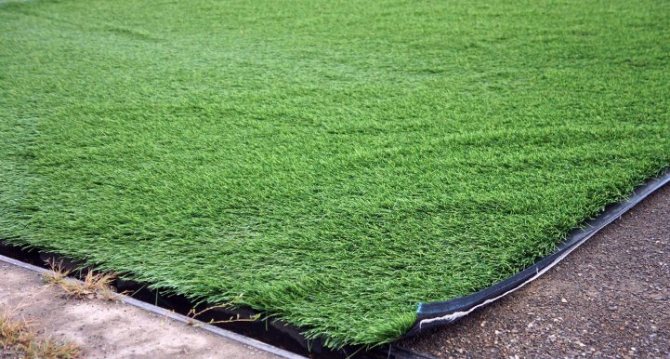

Laying an artificial turf with your own hands: how to choose and a step-by-step description of how to lay a lawn (100 photos)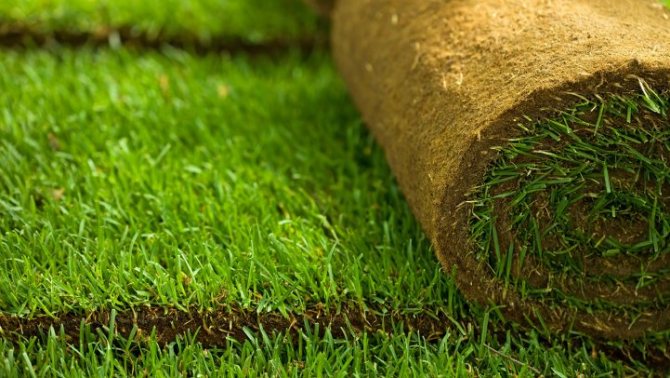

How to lay a roll lawn - a step-by-step master class and tips on how to lay a roll lawn correctly (120 photos + video)
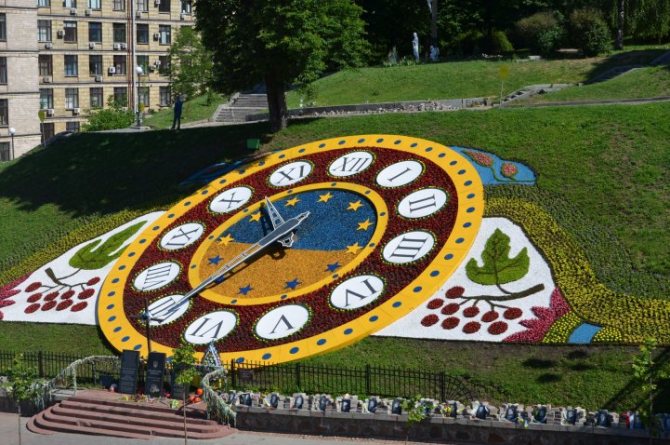

The best flower clock - a step-by-step description of how to make a beautiful element of landscape design correctly
What about the price
The plant grows slowly and covers the soil with a dense cushion. It blooms in early summer, and by autumn its leaves become copper-colored.
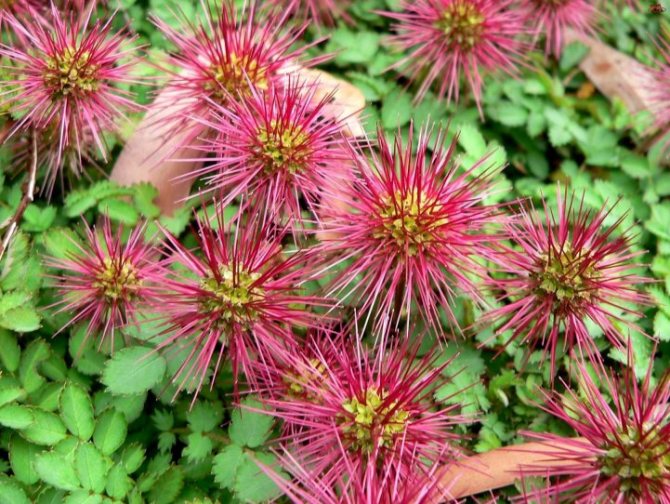

After the flowering period, it is covered with seed fruits, which adds even more attractiveness to the Acene. Well suited for framing garden paths.
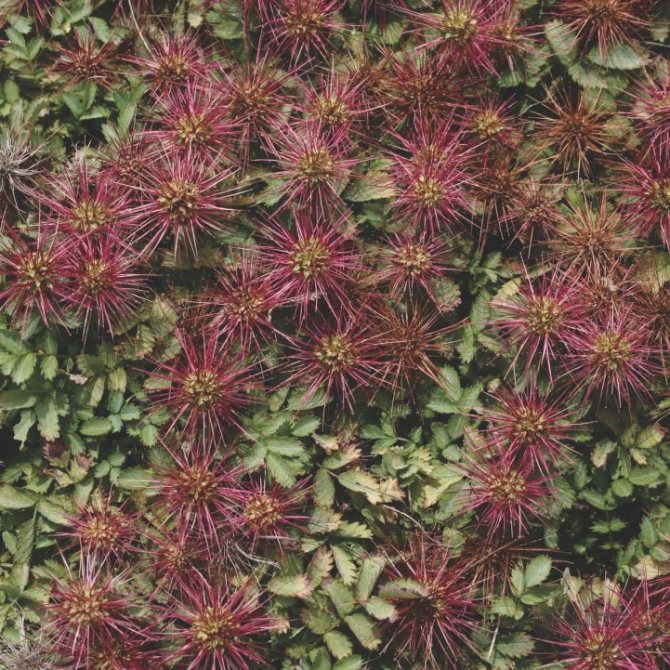

Mossy
Plants deserve special mention, to which few people pay attention in everyday life, although they often catch the eye of everyone. These are a variety of mosses. Someone will be puzzled by the very thought that they can be ranked among decorative garden perennials. However, those interested in Japanese culture will not show the slightest surprise.
Moss gardens are an integral part of the Japanese gardening tradition. These plants can be used to create exquisite shade compositions, which are especially in demand in old overgrown gardens. Moss can serve as a replacement for the traditional lawn, which is almost impossible to break under the crowns of trees, to decorate a garden path lined with tiles or stone, or a pond bank. The only thing he needs besides shade is moisture: with a lack of it, not a single moss will grow.
Reference by topic: Erica herbal - evergreen: photo and care
Common privet
A hardy, fast growing shrub, suitable for use in hedges.In summer, the bushes are decorated with white flowers with a tart-sweet smell, and from September black berries, beloved by birds, ripen.
Flowers / fruits
The flowers are white, with a strong odor; fruits from September.
Common privet
In garden design
The choice of evergreens is great, which makes it possible to use them to decorate any garden landscape. Hedges and group compositions are formed with the participation of such plants:
- barberry;
- boxwood;
- rhododendron;
- ivy;
- yew;
- spruce;
- honeysuckle;
- cypress;
- mahonia;
- thuja.
Evergreen shrubs are a wonderful backdrop for many flowering plants. In solitary plantings, such evergreen crops look good:
- larch;
- cypress;
- evergreen euonymus;
- fir;
- thuja;
- barberry;
- callistemon;
- holly holly;
- Japanese mahonia
- mountain pine.
Evergreens improve the microclimate, save from monotony. They can become the main focus of the site or be combined with other horticultural crops.
Fir
Fir is a coniferous evergreen plant with a grayish, pleasant bark and soft needles. Its roots go deep into the ground, the cones do not fall off, but open right on the tree. Among the decorative and popular varieties:
- Arizona - reaches 7-8 meters in height, has bright red cones, bluish needles, creamy bark;
- balsamic - the smallest of the varieties grows hardly up to half a meter, has a smooth brown bark, rich green needles with a white stripe and purple cones;
- monochromatic - grayish bark, bluish-green needles, tips twisted upward, height up to 8 meters.
Fir loves lighted areas and moist, loose soil, therefore, in dry times, it requires watering. It does not tolerate severe frosts, in the first year the roots need a warm layer of spruce branches, which will cover them.
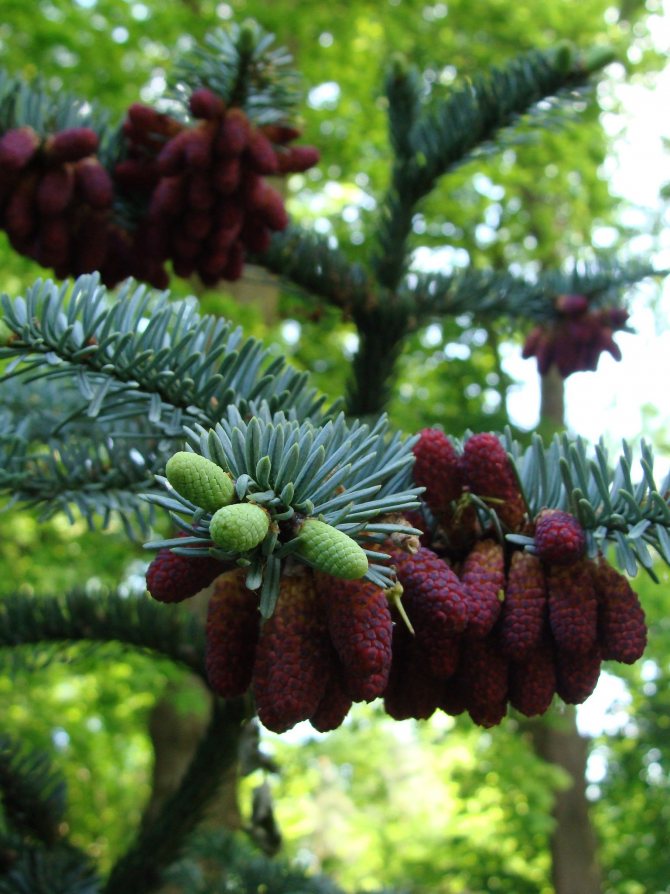

Gravilad
Homeland - cold and temperate zones of the globe. Perennial soil and herbaceous plant. Leaves are green, rosette, lipoid-pinnate; stem leaves are underdeveloped, trifoliate or tripartite.


Flowers are five-petalled (there are varieties with double ones), collected in paniculate or corymbose inflorescences of red and yellow. Inflorescences are located on straight, rigid peduncles. Gravilat blooms in May, during the month.
The fruit is a multi-seeded nut, the seeds are small. Gravilad is propagated by seeds. This is a frost-hardy, light-loving plant, but it also tolerates partial shade. The soil for growing Gravilada must be fertile, moist, drained, containing humus.
They are planted in rocky and alpine gardens, mixborders, rabadki. There are the following types of Gravilada: Gravilad Chilean (red flowers), Gravilad Bright red (red, orange, carmine flowers), Gravilad Hybrid (under this name the varieties are combined: Princess Juliana, Fire Opal, Ruby).
Photos of flowering ornamental plants
Read here Do-it-yourself garden arch: options and examples of use in landscape design (video + 105 photos)
Did you like the article?
0
Let's summarize
Ornamental foliage crops are the gardener's most reliable allies, helping to create multifaceted compositions.
Compared to flowers, they retain their brilliance and decorativeness much longer, which do not decrease after flowering.
Try to decorate your estates with decorative deciduous annuals, they will delight you from spring to late autumn.
Svetlana MASHKOVSKAYA, Candidate of Biological Sciences, National Botanical Garden named after V.I. N.N. Grishko NAS of Ukraine <журнал «огородник»="" фото:="" фото:="" wikimedia="" commons="" фото:="">
About the right background
In general, the choice of the background is an essential factor, since the perception of the composition as a whole depends on it. Contrasting combinations will be more expressive against the background of plants of a calm, dull color. Large-flowered species win against the background of graceful openwork foliage - such as, for example, asparagus officinalis (Asparagus officinalis) or pearl mussel (Achillea ptarmica).
As background plants, you can use silver oak (Elaeagnus argentea), three-veined anaphalis (Anaphalis triplenervis) with their silvery foliage. A spectacular background is created by the yellow foliage of the common hop (Humulus lupulus) variety Aureus.
Traditionally, hedges made up of plants with small leaves or conifers are considered a good background for most decorative compositions. A dynamic background is created by herbaceous grasses, the only drawback of which is their fragility.
The flora of the aquarium
The aquatic world also needs decoration, and therefore there are plants created for just such purposes. In addition, such vegetation performs another important function: it maintains the biological balance of the aquatic environment.
Aquarium plants fall into three categories:
- growing on the surface of the water - small duckweed, floating riccia, pistia, sprouting limnobium, azolla;
- rooting at the bottom - Indian fern, dwarf Hemianthus, limnophila, Vallisneria;
- growing in the water column - egagropila, Javanese moss, monosolenium moss.
All of these numerous species are called decorative. Which plants to choose for your garden plot, apartment or aquarium is a personal matter for each grower.
However, you should always adhere to the rules of care recommended for a particular representative of the natural kingdom.
About space
Competent selection of plants allows you to visually change the space of the garden, expanding its boundaries, hiding and moving away from the viewer unattractive objects. So, with the help of a hedge from fieldfare of mountain ash (Sorbaria sorbifolia), silvery oak, honeysuckle (Lonicera), you can disguise an unsightly fence, or you can visually remove it if you place tall perennial plants in the foreground, for example, heleniums (Helenium), asters - New Belgian (Aster novi-belgii) or New England (Aster novae-angliae), goldenrod (Solidago), cereals.
To visually increase the space, place plants with small and light foliage in the background, for example, purple willow (Salix purpurea) or cereals, and in the foreground place hosts, tuberous begonias (Begonia x tuberhybrida), incense, geranium, coleus with large and dark leaves. Composing a variety of compositions, you will very soon become convinced that the foliage of most plants is a powerful and expressive decorative factor, using which it is easy to create a unique look for your garden.
<2011 - 2019, Planting a Garden. All rights reserved.
Similar posts
Maple story
Garden in miniature
Main garden decorators

